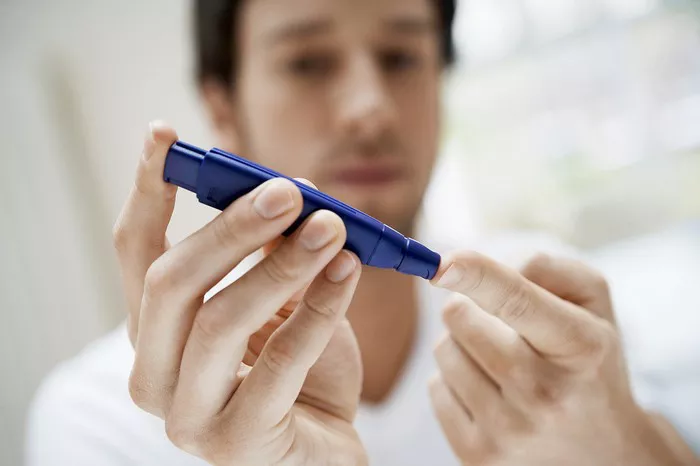Prediabetes is a health condition that serves as a warning sign for those at risk of developing type 2 diabetes. Often, individuals diagnosed with prediabetes are uncertain about the trajectory of their condition—whether it can be reversed or if it will inevitably progress to full-blown diabetes. In this article, we’ll explore the question, “Can prediabetes go away on its own?” and the various factors involved in managing and potentially reversing the condition. By understanding the underlying mechanisms of prediabetes and taking the right steps, individuals can alter the course of their health.
Understanding Prediabetes: The Basics
Before answering whether prediabetes can go away on its own, it is essential to understand what prediabetes is and how it differs from full-blown diabetes.
Prediabetes occurs when an individual’s blood glucose levels are higher than normal, but not yet high enough to be classified as type 2 diabetes. In other words, it is an intermediate stage in the progression of blood sugar imbalances. The term itself implies that the person is at increased risk of developing type 2 diabetes and other related conditions such as cardiovascular disease and stroke.
The key to understanding whether prediabetes can go away lies in the recognition of its underlying causes, which often involve lifestyle factors. These include poor diet, physical inactivity, obesity, and genetics. Typically, prediabetes is identified through blood tests such as:
Fasting plasma glucose (FPG): A blood test done after an overnight fast, with levels between 100 mg/dL and 125 mg/dL suggesting prediabetes.
Oral glucose tolerance test (OGTT): Measures the body’s ability to metabolize glucose after drinking a sugar solution. A 2-hour blood glucose level between 140 mg/dL and 199 mg/dL indicates prediabetes.
Hemoglobin A1c (HbA1c): Reflects average blood sugar levels over the past 2-3 months. A reading between 5.7% and 6.4% is considered prediabetes.
Prediabetes is often symptom-free, which is why regular screening is essential for identifying it before it progresses to type 2 diabetes.
The Role of Lifestyle in Prediabetes Development
Before delving into whether prediabetes can resolve on its own, it’s important to note that lifestyle factors are typically the primary contributors to this condition. In particular:
Diet: A diet high in processed foods, refined sugars, and unhealthy fats can contribute to insulin resistance, a key factor in the development of prediabetes. Insulin resistance occurs when the body’s cells become less responsive to the hormone insulin, leading to elevated blood sugar levels.
Physical Inactivity: Regular physical activity helps the body use insulin more effectively. Sedentary lifestyles are a major risk factor for developing prediabetes.
Obesity: Excess body fat, especially abdominal fat, can increase insulin resistance. Obesity is one of the most significant risk factors for prediabetes.
Genetics: While lifestyle factors are important, genetics also play a role in determining an individual’s risk for prediabetes. A family history of diabetes increases the likelihood of developing the condition.
Given the significant role of lifestyle choices, it’s possible to intervene early to prevent or even reverse prediabetes before it progresses to type 2 diabetes.
Can Prediabetes Go Away on Its Own?
The answer to whether prediabetes can go away on its own is generally no—prediabetes will not simply resolve without intervention. However, with proactive and consistent changes in lifestyle, it is possible to reverse or manage prediabetes effectively and bring blood sugar levels back to normal, preventing the onset of type 2 diabetes.
Reversal through Lifestyle Modifications
The most effective way to address prediabetes is through lifestyle modifications. Research has shown that people with prediabetes who adopt healthier behaviors, such as eating a balanced diet, increasing physical activity, and losing excess weight, can normalize their blood glucose levels and even prevent the progression to type 2 diabetes. Several studies have supported the idea of “reversing” prediabetes through these changes.
One of the landmark studies in this area is the Diabetes Prevention Program (DPP), a large, multi-center study conducted in the United States. The DPP found that participants with prediabetes who made specific lifestyle changes—such as engaging in regular physical activity (150 minutes per week) and losing 5-7% of their body weight—reduced their risk of developing type 2 diabetes by up to 58%. The study also highlighted the importance of dietary changes, including the reduction of caloric intake and the consumption of healthier foods.
What Does Reversal Mean?
The concept of reversal is not the same as “curing” prediabetes. Rather, it refers to the ability to bring blood sugar levels back within normal, non-diabetic ranges. Individuals who reverse prediabetes through lifestyle changes are not free from the risk of developing diabetes in the future. Instead, they have effectively managed the condition and reduced their risk of progression.
It’s important to note that even if blood sugar levels return to normal, ongoing vigilance is required. Regular monitoring of blood glucose levels and maintenance of healthy habits are critical for preventing relapse into prediabetes or diabetes.
Can Medication Help Reverse Prediabetes?
While lifestyle changes remain the cornerstone of managing prediabetes, medications can sometimes play a role, especially for individuals who are unable to make significant changes to their lifestyle or who are at particularly high risk of developing diabetes.
Two common medications prescribed for managing prediabetes are:
Metformin: This medication is primarily used in the treatment of type 2 diabetes but is sometimes prescribed for individuals with prediabetes, particularly those who are at high risk. Metformin works by improving insulin sensitivity, helping the body use glucose more effectively and reducing blood sugar levels.
GLP-1 Agonists: Glucagon-like peptide-1 (GLP-1) agonists are injectable medications that help regulate blood sugar levels by increasing insulin secretion and slowing gastric emptying. They are typically used in the treatment of type 2 diabetes but may also be prescribed for prediabetic patients at risk of developing diabetes.
However, medications should be seen as a complement to lifestyle changes rather than a replacement. Relying solely on medications without addressing the root cause—lifestyle factors—is unlikely to result in lasting improvements.
How to Manage and Monitor Prediabetes
For individuals diagnosed with prediabetes, ongoing management and monitoring are key to preventing the progression to type 2 diabetes. The following steps can help ensure effective management:
1. Regular Blood Glucose Testing
Monitoring blood glucose levels regularly is essential for tracking progress. Doctors may recommend HbA1c tests, fasting blood glucose tests, or oral glucose tolerance tests to assess whether blood sugar levels are improving or worsening.
Frequent self-monitoring of blood glucose may also be helpful for those who are at a higher risk of complications. Keeping a log of blood sugar readings, along with notes on diet and physical activity, can help healthcare providers adjust treatment plans as needed.
2. Adopting a Healthy Diet
Eating a balanced diet is crucial for managing prediabetes. Key dietary recommendations include:
- Choosing whole grains over refined carbohydrates.
- Incorporating fiber-rich foods like fruits, vegetables, and legumes, which help regulate blood sugar levels.
- Limiting sugary drinks and foods high in added sugars.
- Eating healthy fats such as those found in nuts, seeds, avocados, and olive oil.
- Reducing portion sizes to maintain a healthy weight and prevent overeating.
3. Regular Physical Activity
Engaging in regular physical activity—aiming for at least 150 minutes of moderate aerobic exercise per week—is one of the most effective ways to improve insulin sensitivity. Activities such as walking, cycling, swimming, or strength training can help regulate blood sugar levels and promote weight loss.
4. Weight Loss
Losing excess weight, particularly abdominal fat, can significantly improve insulin resistance and lower blood sugar levels. Even a modest weight loss of 5-10% of body weight can lead to meaningful improvements in blood glucose control.
5. Stress Management
Chronic stress can negatively affect blood sugar levels by increasing the production of stress hormones like cortisol. Practicing stress-reducing activities such as meditation, yoga, deep breathing, or spending time outdoors can help manage blood sugar levels.
6. Regular Check-ups
Regular check-ups with a healthcare provider are important for monitoring progress and adjusting management strategies. A doctor may also help identify other risk factors for complications, such as high blood pressure or high cholesterol, and recommend appropriate treatments.
Conclusion: Reversibility and Lifelong Management
Prediabetes is a serious health condition that should not be ignored. While it is unlikely to “go away” on its own, it is possible to reverse or manage prediabetes effectively through lifestyle changes. A healthy diet, regular exercise, weight management, and stress reduction can all contribute to bringing blood glucose levels back into a normal range.
However, achieving and maintaining these lifestyle changes requires ongoing effort. Even after blood glucose levels improve, individuals with a history of prediabetes must remain vigilant and continue to make healthy choices. Through commitment to these strategies, individuals can reduce their risk of developing type 2 diabetes and enjoy better overall health.
Ultimately, prediabetes serves as a wake-up call—a chance to take proactive steps to prevent the development of a chronic and life-threatening condition. With the right interventions and ongoing commitment, individuals can manage prediabetes effectively and avoid its progression to full-blown diabetes.
Related topics:
What’s Normal Blood Glucose Ranges in Diabetes Monitoring


























